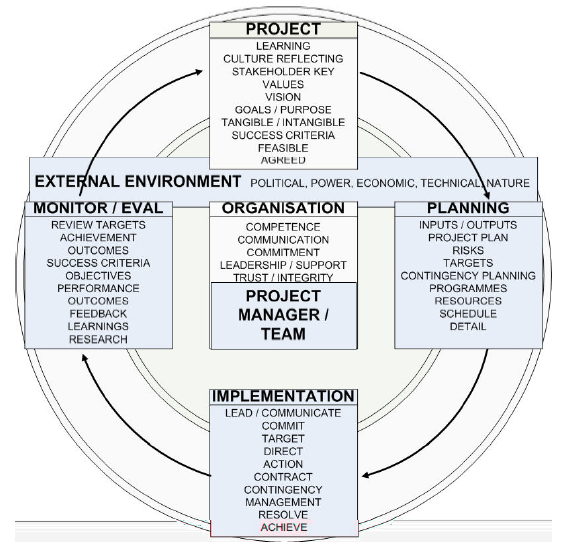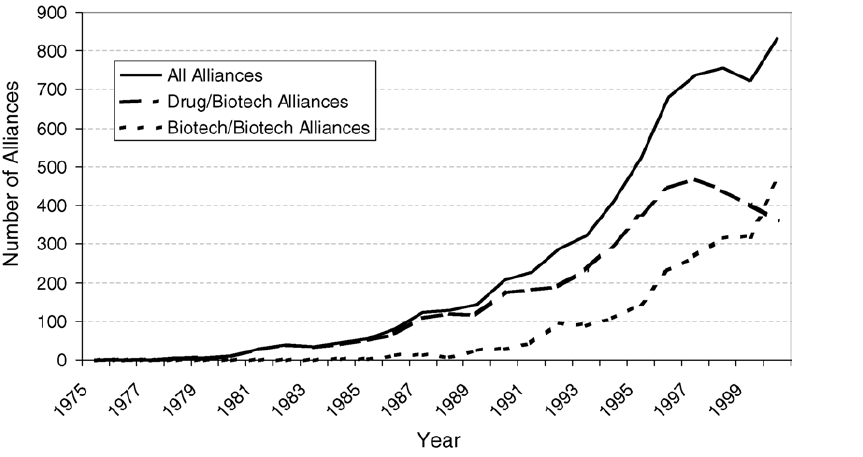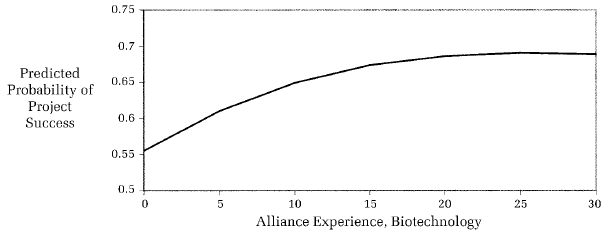Advancements in biotechnology have been tremendous for the last forty years. Commercialization has been rampant while researchers have engaged in innovation activities that have led to development of technological tools in biotechnology (Zeller, 2001). The year 1980 experienced substantial investments in biotechnology around the globe which was partially influenced by three factors which are; the ruling by the Supreme Court which allowed biotechnology to be recognized as a new life form, increased funding by the government to Universities to carry out research activities enabling innovation and the success of biotechnology companies in the public domain which attracted individuals to study biotechnology (Stuart and Ding, 2006). Despite the success that has been realized in this field, some failures also arose as a result advancements in biotechnology. One can draw conclusions regarding failure and success of biotechnology companies by closely examining them. Assessment of the failures can help these companies come up with strategies that can help them maximize on success (Baccarini, 1999). Proper strategies have to be instituted in the following areas to ensure successful operations; project mission, top management support, project planning, client consultation, human resources, customer feedback, technical activities and efficient means of communication (Hyvari, 2006).
Innovations in Biotechnology have a great impact in our daily lives as a result of new findings in plant, animal and human biotechnology fields. This implies that the findings in any of the above fields have a big impact in improvement of human life. When a biotechnology company chooses to carry out a specific project, its success is measured from the manner in which it can achieve the set goals within an estimated time limit and cost (de Wit, 1988).
This paper will discuss biotechnology project success with a closer look at factors that contribute to success of a firm. Other factors that will be discussed are things that can cause failure and ways through which the company can handle risks associated with their projects.
Factors for success
There are several factors that can lead to success of a project and they can be categorized according to the following:
- Factors related to the project
- Factors that arise as a result of the project manager or team members
- Factors concerning the organization
- External environment
The following is a diagram representing factors.

As illustrated by the diagram, the four factors that were listed earlier are crucial for success of a project in any organizational. After successfully addressing these factors, a firm can then start working on matters that pertains planning, implementation and evaluation. The circular representation of processes in the diagram indicates that the all factors have a direct effect on each other. Therefore, this implies that successful implementation of one of the factors will likely lead to the success of the other. For instance, during planning, factors that deal with risk management are considered. If an organization plans carefully for any risks that are likely to be faced in future, precautionary measures would be taken before occurrence. The end result is a smooth implementation of the project because there are remedies to obstacles (Baccarini, 1999)
There are four dimensions within which a project can succeed within a specified time line. The four dimensions should be addressed to allow the desired results to be achieved within the time frame. The first dimension to look at is efficiency as a short time goal. Through efficiency, cost is managed as well as realization of goals within specified period of time. The second dimension deals with customer success which is a medium term goal. In this dimension, aspects such as technical specifications are addressed as well as functional performance issues that ensure the progress of a project throughout its lifetime. The third dimension concerns the long term goals of the organization. In this dimension, issues that are addressed deal with increasing the market share of the firm, building confidence and satisfaction among the clients and engaging in influential activities. The fourth dimension that ought to be looked at is preparation for the future. This dimension concentrates on development of strategies, products and techniques that will gain favor in the market (Shenhar, 2001).
None of the factors mentioned above can be underestimated because they all rely on each other for implementation. Ignoring one will likely paralyze the functioning of the other dimension. For instance, if a company fails to put into consideration the fourth dimension, it might not be ready for the next stage of implementation. The success of a firm is dependent on the individuals working as a team because they are responsible for all activities that take place (Baccarini, 1999).
Risk management
Current research and development activities acknowledge the advancements that have been made in Biotechnology for the last thirty years. Some of the biggest companies that deal with biotechnology and pharmaceuticals are engaging in activities that enable them develop innovative products as well as increase manufacturing capacity. By doing these activities, they guarantee themselves of a big share of the market. One of the factors that the company should carefully examine is to keep growing while mitigating risks that are likely to be encountered. They can do this by putting in place infrastructure needed to compete globally. Growth is achieved through examination of possible challenges and setting plans to solve them in the event that they occur (Szuhaj, 2008).
A global growth strategy is the most recommendable for a biotechnology company intending to increase its market share. In this regard, a firm has to manufacture new products within a specified period of time using cost effective measures. Records from tuft centers indicate that for a drug to be fully developed and used, it takes a period of seven years of successful clinical trials and close to one hundred million dollars in expenses which are about a third of the cost when you consider it from the time the idea was born to production. This has prompted biotechnology companies to derive new ways of conducting research and drug development at a lower cost. As a strategy to reduce financial constraints and risks associated with drug development, these companies are conducting activities in other countries that have lower cost compared to their own countries. In addition, they try as a much as possible to predict demand of certain drugs so that they correlate demand and production. By doing this, they ensure that they do not produce drugs in excess due to shorter expiry time (Kunreuther, 2001).
Several measures have to be considered for adoption of global growth strategy by a pharmaceutical company so as to mitigate financial risks. For it to be achieved, the company should protect intellectual property for regulation and enforcement purposes. The second step is to identify the most reliable partners to collaborate with. The other measure is for the firm to find ways of navigating through political and economic environments. The fourth measure is to strike a balance between not paying taxes and the suitability of the operating environment. The other factors include flexibility in manufacturing capacity and ability to effectively manage supply chain and costs involved (Christopher, 2004). In addition, biotech companies can handle financial risks successfully if they cross examine their expansion needs and criteria as well as formulating balanced business objectives (Szuhaj, 2008).
In order to contain financial risks, other companies of biotechnology have merged with companies with similar operations. They set up union firms that coordinate activities of the merged firms. A good example is the pharmaceutical products that are being manufactured concurrently resulting from invention of new active substances like gene therapy that has helped in improvement of the economy in many countries (Zeller, 2001). One of the pioneers of pharmaceutical companies in the world, Novartis started their business on the basis of chemical screening. They thrived into the field of biotechnology through invention of recombinant DNA technology in 1973. The figure below illustrates sequences of inventions and collaborations among biotechnology companies or pharmaceutical companies since 1975.

From the diagram above (Fig 2); it is evident that the numbers of alliances among biotech and pharmaceutical companies have been increasing over the years. Through these mergers, the companies are able to share financial burdens associated with drug development hence financial risks that are likely to be encountered in the market for all parties involved are reduced (Rothaermel, 2005). As a result of experiences gotten by companies through practice, chances of succeeding in the market are boosted through mergers. According to Baccarini (1999), a company that has been in the market for a long time has high chances of succeeding. This can be illustrated by the graph below.

Both biotechnology and pharmaceutical companies have to conduct research in order to make products that are required in the market. A good example is when a company is promoting a drug for Aids. Their research should address questions such as the number of people that can afford the drug and whether the drug has the potential to cure all cases that pertains aids or just a limited number. Research and development of a drug is an expensive venture which calls for firms to be very specific in the product they want to produce when carrying on a research project. This will enable them cut costs on products that are unnecessary (Evans, 2008).
Some considerations have been put in place in order to increase the success of biotechnology companies. It is also important to note that scientists should not necessarily provide all aspects of the projects that will be mentioned later. If a team is interested in initiating a biotechnology program yet they it does not have a successful commercial plan, it can merge with others who have the capacity to conduct it. They can do it jointly following some written agreements that protect the rights of the inventor. It is at this point that joint ventures between firms are formed (Evans, 2008).
Increasing success rate
Success rate of a biotechnology firm is also dependent on motivational levels of the people initiating the project. They should have sufficient knowledge and skills to carry on the project. They should posses’ characteristics of entrepreneurs who will be aggressive to undertake the projects of the company. People that support the project should not be necessarily scientists of the firm due to the fact that scientists are continuously engaged in research projects. The support people should be made to understand the scientific facts behind the project as well as business management skills. In addition, they should make sure that the activities of the firm are carried out and that things happen as planned (Byers, 1997).
The strategy with which a firm intends to carry on a project is the most important thing to consider. By having a strategy implies that a company has a plan of things to be done in the course of the project and future implications. Every firm has their own strategies though some are similar in the way they approach issues. Strategies are formulated depending on a number of factors that include the mission and objective of the company and intention of the product to be made. However, the mission statement and strategy should be distinguished. The mission statement only describes what is thought can be achieved while the strategy describes the steps to be followed to accomplish the target.
All biotechnology companies look forward to achieve success. Though it may look simple, the undertakings that ought to be followed need hard work and determination. Therefore, these companies should use tactical approaches when planning. Groups of people in the companies should draw tactical plans that are focused on scientific development of products, product innovation, business management and financial skills. Through product planning, the firm is likely to succeed in making a proper business plan (Evans, 2008).
Conclusion
This paper has provided essential information required for a company to achieve success. At first, there was a list of factors to be considered for a firm to attain success. Then there was guidance on risk management especially on handling financial risks. The final discussion addressed issues that can increase the success rate of a company as well as things that can be avoided to avoid failure. One of the best approaches to guarantee success that I can advice firms to adopt is to use merging as a means of increasing efficiency and production.
References
Baccarini, d. 1999. The logical framework method for defining project success. Project management journal, 5, 25-32.
Belassi, w. A. T., o. I 1996. A new framework for determining critical success/failure factors in projects. International journal of project management, 14, 141-151.
Christopher, m. 2004. Mitigating supply chain risk through improved confidence. International journal of physical distribution & logistics management, 34, 388-396.
Darren filson, r. M. 2005. Equity links and information acquisition in biotechnology alliances. Journal of economic behavior & organization, 59, 1-28.
De wit, a. 1988. Measurement of project success. International journal of project management, 6, 164-170.
Evans, w. B. A. C. 2008. The business of biotechnology cambridge university press.
Frank t. Rothaermel, h. H. 2005. The effect of general and partner-specific alliance experience on joint r&d project performance. Academy of management journal, 48, 332-345.
Hyväri, i. 2006. Success of projects in different organizational conditions. Project management journal, 37, 31-41.
Kunreuther, h. 2001. Mitigation and financial risk management for natural hazards. Geneva papers on risk and insurance-issues and practice, 26, 277-296.
Shenhar, a. J., dvir, d., levy, o. And maltz, a. C. 2001. Project success: a multidimensional strategic concept. Long range planning, 34, 699-725.
Stuart, t. E. & ding, w. W. 2006. When do scientists become entrepreneurs? The social structural antecedents of commercial activity in the academic life sciences. Ajs, 112, 97-144.
Szuhaj, m. 2008. How can biotechnology companies manage growth and mitigate risk in a global market? Biotech location guide.
Tom byers, h. K., robert i. Sutton 1997. Characteristics of the entrepreneur: social creatures, not solo heroes. The handbook of technology management.
Zeller, c. 2001. Clustering biotech: a recipe for success? Spatial patterns of growth of biotechnology in munich, rhineland and hamburg. Small business economics, 17, 123-141.